|
Books Should Be Free Loyal Books Free Public Domain Audiobooks & eBook Downloads |
|
|
Books Should Be Free Loyal Books Free Public Domain Audiobooks & eBook Downloads |
|
Instructional Books |
|---|
|
Book type:
Sort by:
View by:
|
By: Edmund Spenser (1552?-1599) | |
|---|---|
 Amoretti: A sonnet sequence
Amoretti: A sonnet sequence
The Amoretti (meaning little love poems) is a sequence of 89 sonnets written in the tradition of the Petrarchan sonnets, a popular form for poets of the Renaissance period. Spenser’s sequence has been largely neglected in modern times, while those of his contemporaries William Shakespeare and Sir Philip Sidney have been acclaimed. However, because of the artistic skill, along with the emotion and the humor exhibited, these poems deserve a broader hearing, even though they may be somewhat difficult for the present-day reader, partly through Spenser’s love for words and expressions that were already archaic in his time... | |
By: Edward M. Bounds (1835-1913) | |
|---|---|
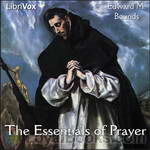 The Essentials of Prayer
The Essentials of Prayer
The Sunday School Times says of the author, "he was a specialist in prayer and his books are for the quiet hour, for careful meditation and for all who wish to seek and find the treasures of God." This book is a ready helper for those who want to follow his path, with more and better communication with the Lord. | |
By: Edwin E. Slosson (1865-1929) | |
|---|---|
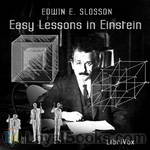 Easy Lessons in Einstein
Easy Lessons in Einstein
Published in 1920, Slosson’s Easy Lessons in Einstein is one of the first popularizations of Einstein’s theory of relativity. This book is meant to convey to the general reader the ideas of relativity in non-mathematical terms, by the use of thought experiements and pop-cultural references of the day. This edition also includes a short article by Einstein on Time, Space and Gravitation. | |
By: Elizabeth Blackwell (1821-1910) | |
|---|---|
 Pioneer Work in Opening the Medical Profession to Women
Pioneer Work in Opening the Medical Profession to Women
A fascinating account of the first woman to receive a medical degree in the United States. She writes of her struggles in being accepted to a medical school . She details her experiences while in the process of obtaining her degree, and her work both with patients and administratively, helping to found medical schools and hospitals for women. Summary by Phyllis Vincelli | |
By: Elizabeth Cady Stanton (1815-1902) | |
|---|---|
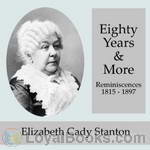 Eighty Years and More; Reminiscences 1815-1897
Eighty Years and More; Reminiscences 1815-1897
Elizabeth Cady Stanton was one of the premier movers in the original women’s rights movement, along with Susan B. Anthony, her best friend for over 50 years. While Elizabeth initially stayed home with her husband and many babies and wrote the speeches, Susan went on the road to bring the message of the women’s rights movement to an often hostile public. When black men were given the vote in 1870, Susan and Elizabeth led the women’s rights establishment of the time to withhold support for a bill that would extend to black men the rights still denied for women of all colors... | |
By: Elizabeth E. Lea (1793-1858) | |
|---|---|
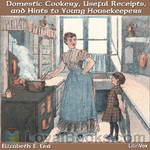 Domestic Cookery, Useful Receipts, and Hints to Young Housekeepers
Domestic Cookery, Useful Receipts, and Hints to Young Housekeepers
The compiler of [this book] having entered early in life upon a train of duties, was frequently embarrassed by her ignorance of domestic affairs. For, whilst receipt books for elegant preparations were often seen, those connected with the ordinary, but far more useful part of household duties, were not easily procured; thus situated, she applied to persons of experience, and embodied the information collected in a book, to which, since years have matured her judgment, she has added much that is the result of her own experiments... | |
By: Ellen Douglas Deland (1860-1923) | |
|---|---|
 Friendship of Anne: A Story
Friendship of Anne: A Story
This is the story of Sydney Stuart who is sent to a girls' boarding school with all its difficulties and adventures. Sydney Stuart and her school roomate/rival Bertha Macy vie for the friendship of schoolmate Anne Talbot. Summary by Lynda Marie Neilson | |
By: Ellen G. White (1827-1915) | |
|---|---|
 Education
Education
Ellen White said that one of the most delicate tasks in life was working with youthful minds. Teaching should be varied which can make it possible for the 'high and noble powers of the mind' to have a chance to progress. Educators of youth should be gentle and loving and have self control. Her idea of creating a Christian educational system is detailed in this book. | |
By: Elsie Lincoln Benedict | |
|---|---|
 How to Analyze People on Sight Through the Science of Human Analysis: The Five Human Types
How to Analyze People on Sight Through the Science of Human Analysis: The Five Human Types
In this popular American book from the 1920s, accomplished public speaker and self-help charlatan Elsie Lincoln Benedict outlines her pseudo-scientific system of "Human Analysis". She proposes that, within the human race, five sub-types have developed through evolutionary processes, each with its own distinct character traits and corresponding outward appearance. She offers to teach the reader how to recognise these five types of people and understand their innate differences. Her ideas have never been taken seriously by the scientific community, but this book is considered a classic within its genre and remains in print today. Summary by Carl Manchester. | |
By: Emily Post (1873-1960) | |
|---|---|
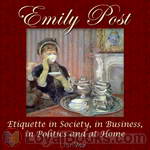 Etiquette in Society, in Business, in Politics and at Home
Etiquette in Society, in Business, in Politics and at Home
“Many who scoff at a book of etiquette would be shocked to hear the least expression of levity touching the Ten Commandments...” Thus opens the introduction to one of the most popular American non-fiction books – one that was avidly studied by both men and women, children and adults, leaders of society and those who yearned to be part of the charmed circle! Etiquette in Society, in Business, in Politics and at Home by Emily Post was first published in 1922 and became an instant bestseller... | |
By: Estelle M. Hurll (1863-1924) | |
|---|---|
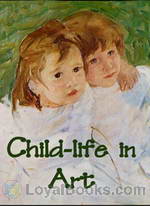 Child-life in Art
Child-life in Art
The poetry of childhood is full of attractiveness to the artist, and many and varied are the forms in which he interprets it. The Christ-child has been his highest ideal. All that human imagination could conceive of innocence and purity and divine loveliness has been shown forth in the delineation of the Babe of Bethlehem. The influence of such art has made itself felt upon all child pictures. It matters not whether the subject be a prince or a street-waif; the true artist sees in him something which is lovable and winning, and transfers it to his canvas for our lasting pleasure. | |
By: Ferreol Girardey (1839-1930) | |
|---|---|
 Prayer: Its Necessity, Its Power, Its Conditions
Prayer: Its Necessity, Its Power, Its Conditions
Redemptorist Father Ferreol Girardey's book, which bears an imprimatur, is a broad introductory treatise on the subject of prayer. He discusses the power and necessity of prayer, explains why some prayers do not seem to be answered, and tells us how to make our prayers more acceptable to God. In particular, he instructs the reader on what to pray for and for whom to pray. He also details the conditions necessary for efficacious prayer and explains the times when it is most suitable to pray. Father Girardey includes numerous lessons from the gospel on prayer and offers selections from Meditations for Every Day of the Year by Redemptorist Father Louis Bronchain. | |
By: Florence Nightingale (1820-1910) | |
|---|---|
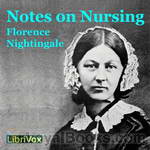 Notes on Nursing
Notes on Nursing
Notes on Nursing was published in 1859 and is a fascinating view into the theories underpinning the early development of modern nursing and public health reform by "the Lady with the Lamp", Florence Nightingale. Emphasising common sense and thought for the patient's care in many more ways than just administering physician-prescribed medicines, this is still a very relevant book for those interested in health or caring for the sick and infirm today.Summary by Cori Samuel. | |
By: Frances Hodgson Burnett (1849-1924) | |
|---|---|
 Sara Crewe: or, What Happened at Miss Minchin’s Boarding School (version 2)
Sara Crewe: or, What Happened at Miss Minchin’s Boarding School (version 2)
Sara Crewe, an exceptionally intelligent and imaginative student at Miss Minchin's Select Seminary for Young Ladies, is devastated when her adored, indulgent father dies. | |
By: Francis J. Finn, S.J. (1859-1928) | |
|---|---|
 Claude Lightfoot, or How the Problem Was Solved
Claude Lightfoot, or How the Problem Was Solved
Most of the boys in the Catholic school called Milwaukee College are engrossed with baseball and keeping up with their studies. When twelve year old Claude Lightfoot is transferred into the school, he has a rocky time of it. While Claude excels in baseball and other playground activities, he also has a knack of annoying the other boys, particularly one who is a mean bully. And though Claude is mentally bright, his hyperactive classroom behavior is a trial to his teacher. The problem that must be solved is whether Claude can settle down to become a responsible young man capable of self control... | |
 Percy Wynn, or Making a Boy of Him
Percy Wynn, or Making a Boy of Him
In this volume, which follows the author's popular book "Tom Playfair", a new boy is just arriving at St. Maure's boarding school. Percy Wynn has grown up as the only boy in a family of 10 girls. He has never played with boys before, and no one looking at him for a moment would hesitate to set him down as "Mamma's darling". Tom and his friends befriend Percy, and attempt to repair his formal manners, and "make a boy of him". | |
 Harry Dee; or Making it Out
Harry Dee; or Making it Out
Harry Dee, a nervous, sensitive boy, given to somnambulism, arrives at St. Maure's following his experiences involving the murder of his rich uncle. Tom Playfair and Percy Wynn help to restore Harry to his former self, which includes solving "The Mystery of Tower Hill Mansion." This is the last book of the three of Fr. Finn's famous trio. | |
By: Frederick Boyle (1841-?) | |
|---|---|
 About Orchids, a Chat
About Orchids, a Chat
This is not a manual of instruction for orchid growers; though there are many hints on cultivation, and a few paragraphs on how to hybridize. The author is just an enthusiastic amateur orchid lover. He takes the reader on a wander through the dangers and consequences of hunting orchids in the tropical jungles of the nineteenth century, and chats about the extreme peculiarities of orchid growth, behaviour and structure, colouring the essays with his own experiences and with his delight in cultivating these beautiful plants. Beware! A new hobby beckons! | |
By: Friedrich Nietzsche (1844-1900) | |
|---|---|
 Complete Works of Friedrich Nietzsche: Volume 3
Complete Works of Friedrich Nietzsche: Volume 3
Volume 3 of the complete works contains several short critical introductory essays, five lectures under the heading "On the Future of our Educational Institutions," and finally an essay by the author entitled "Homer and Classical Philology." As always, Nietzsche believes in the importance of classical thought. | |
By: Friedrich Wieck (1785-1873) | |
|---|---|
 Piano and Song
Piano and Song
This book talks about teaching, learning and performing on the piano in a delightful style, alternating between conversation and instruction. As he was the father of Clara Schumann and Robert Schumann's teacher, need I say more? | |
By: G. Campbell Morgan (1863-1945) | |
|---|---|
 Wherein?
Wherein?
These studies in the book of Malachi were delivered as addresses to the students at Mr. Moody’s Bible School in Chicago, and then to my own congregation. They have also appeared in “The Record of Christian Work” in the United States, and in “Out and Out” in England. They are now sent out in a more permanent form, after careful revision, with the prayer that they may be used of God in calling His own children into the place of power without which form is nothing. (Introduction by G. Campbell Morgan) | |
By: George Lovell Cary | |
|---|---|
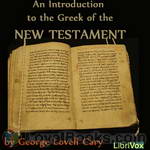 An Introduction to the Greek of the New Testament
An Introduction to the Greek of the New Testament
A collection of lessons (primarily in grammar) for New Testament Greek (also known as Koine) collected by a professor at Meadville Theological School of Pennsylvania. There are over 80 short lessons, each covering an aspect of verbs, nouns, etc. | |
By: George MacDonald (1824-1905) | |
|---|---|
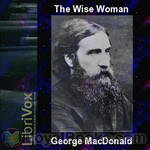 The Wise Woman
The Wise Woman
George MacDonald was an influential Scottish author, poet, and Christian minister. MacDonald’s works (particularly his fairy tales and fantasy novels) claimed the admiration of such authors as J. R. R. Tolkien, C. S. Lewis, and Madeleine L’Engle. The Wise Woman fairy tale was one of MacDonald’s more popular works. This delightful story describes how a woman of mysterious powers pays visits to two very different young girls: one a princess, the other a shepherd’s daughter. Neither girl is left unchanged by the startling events that are unleashed as a result: and the reader is confronted by astonishing fairy-worlds in which the girls are forced to choose between good and evil... | |
By: Gertrude Jekyll (1843-1932) | |
|---|---|
 Wood and Garden
Wood and Garden
Wood and Garden reads like a walk through the garden with reknowned garden designer Gertrude Jekyll as she discusses her plant choices and placement, how she integrates nature into her design, and how she maintains and enjoys the garden. | |
By: Gustav Kobbé (1857-1918) | |
|---|---|
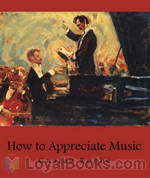 How to Appreciate Music
How to Appreciate Music
Originally published in 1906, this book is essentially a how to guide on music appreciation. Includes sections on the pianoforte, orchestral, and vocal music. Good for anyone who wishes for a greater appreciation of the wonders of music. | |
By: H. G. Wells (1866-1946) | |
|---|---|
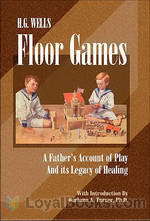 Floor Games
Floor Games
H.G. Wells had so much fun playing with his children on the floor of their playroom, he decided to write a jovial little book to inspire other parents in their pursuit of quality time with the kids. While the raw materials available from hobby stores of his day were woefully short of the variety and quality of what can be bought easily now, he and his sons created their own worlds to rule. This short work describes two games of imagination played out upon the floor of his home – an archipelago of islands, and a thoroughly integrated city, conveniently organized with two mayoral positions for his sons “G... | |
 Anticipations
Anticipations
Wells considered this book one of his most important, a natural follow-up to such works as his Man of the Year Million and The Time Machine. His goal was to get people to think and act in new ways. The book starts with a look at how humans get along socially and how they carry out their business ventures. It then discusses how these elements influence others, such as politics, the world of work, and education. H. G. tried to make clear how the current social order was disintegrating without preparing another to take its place. He then traced the roots of democracy, which in its present state he saw as unworkable. Instead, he proposed a new republic. He also critiqued modern warfare. | |
By: H. S. Adams (1864-?) | |
|---|---|
 Making a Rock Garden
Making a Rock Garden
A short look at building a rock garden, right from the rocks themselves and how to arrange them, to choosing and placing the plants, touching wall and bog gardens, too. In this little monograph, the author is trying to draw the eyes of U.S. gardeners in to the intimate beauty of this neglected hobby.The original work has a number of attractive and useful photographs and drawings. | |
By: Hannah Whitall Smith (1832-1911) | |
|---|---|
 The God of All Comfort
The God of All Comfort
This book is written to Christians who profess to believe the Bible as God's revelation, but whose "lives are filled with discomfort and unrest." Smith aims to show that the Bible's claim that God is the "the God of all comfort" is not an over-advertisement or misunderstanding, but that it is possible to avail ourselves of the doubts and heavy anxieties that plague so many Christians.By explaining God's part and man's part, Smith aims to show her readers that it is possible to overcome feelings of defeat and despair and find rest and peace in Christ... | |
By: Harold Speed | |
|---|---|
 The Practice and Science of Drawing
The Practice and Science of Drawing
THE PRACTICE & SCIENCE OF DRAWINGBY HAROLD SPEEDPREFACEPermit me in the first place to anticipate the disappointment of any student who opens this book with the idea of finding wrinkles on how to draw faces, trees, clouds, or what not, short cuts to excellence in drawing, or any of the tricks so popular with the drawing masters of our grandmothers and still dearly loved by a large number of people. No good can come of such methods, for there are no short cuts to excellence. But help of a very practical kind it is the aim of the following pages to give; although it may be necessary to make a greater call upon the intelligence of the student than these Victorian methods attempted... | |
By: Harold W. Fairbanks (1860-1952) | |
|---|---|
 The Western United States: A Geographical Reader
The Western United States: A Geographical Reader
“In preparation of this book the author has had in mind the needs of the upper grammar grades. The subject matter has not been selected with the object of covering the field of Western geography in a systematic manner, but instead the attempt has been made to picture as graphically as may be some of its more striking and interesting physical features, and the influence which these features have exerted upon its discovery and settlement.” (from the Preface of The Western United States) | |
By: Harrison Weir (1824-1906) | |
|---|---|
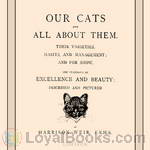 Our Cats and All About Them
Our Cats and All About Them
The Englishman Harrison Weir organized the first cat show in England in 1871. In 1887 he founded the National Cat Club and was its first President and Show Manager until his resignation in 1890.Our Cats and all about them is concerned with cats and all about them. It describes numerous breeds of cats and what to look for in a cat show champion, and deals with the general management and common diseases of cats, as well as how to raise healthy kittens. But there is also a hodge podge of cat related stories, games, nursery rhymes, superstitions, as well as a list of cat lovers and a chapter of "The Cat in Shakespeare". | |
By: Havelock Ellis (1859-1939) | |
|---|---|
 Studies in the Psychology of Sex, Volume One
Studies in the Psychology of Sex, Volume One
The first of six volumes, this volume covers in extensive detail the topics of "The Evolution of Modesty", "The Phenomena of Sexual Periodicity", and "Auto-Eroticism". Written as an anthropological and psychological study from the point of view of Havelock, the famous British sexologist of the late 19th century, who was also a physician and social reformer. | |
By: Helen Fryer | |
|---|---|
 The Esperanto Teacher
The Esperanto Teacher
The international language Esperanto was first released to the world in 1887, when L. L. Zamenhof published his first book, “Dr. Esperanto’s International Language”. Since that time, many learning books have been developed to help the beginner attain a proficiency in the language. Helen Fryer’s “Esperanto Teacher” is one of the earliest of these attempts in English. Divided into 45 short and easy lessons and supplemented with sections on joining words, exclamations, compound words, arrangement... | |
By: Henry Edward Krehbiel (1854-1923) | |
|---|---|
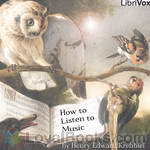 How to Listen to Music
How to Listen to Music
This book is "not written for professional musicians, but for untaught lovers of the art". It gives broad instruction on composers, styles, instruments, venues - and when to believe the critics. | |
By: Henry Gray | |
|---|---|
 Anatomy of the Human Body
Anatomy of the Human Body
Henry Gray’s classic anatomy textbook was first published in 1858 and has been in continuous publication ever since, revised and expanded through many successive editions. This recording is of the public-domain 1918 US edition (some information may be outdated). | |
By: Henry M. Robert (1837-1923) | |
|---|---|
 Robert's Rules of Order
Robert's Rules of Order
Originally written in 1876 by Major Henry M. Robert of the US Army Corps of Engineers, Robert's Rules of Order is the most widely used authority in the United States today for "parliamentary law, based...upon the rules and practice of Congress" for "organizing and conducting the business of societies, conventions, and other deliberative assemblies." | |
By: Homer Greene (1853-1940) | |
|---|---|
 Whispering Tongues
Whispering Tongues
Parmenter and Lee are good friends who attend Concord College. But a hazing incident tears the friendship apart, and affects the lives of both the hazers and the hazee. And the whispering tongues of classmates of falsehoods, jealousy and rumor, serve only to make matters worse. Another heart-warming tale of disgrace and redemption from Homer Greene. | |
By: Horace Mann (1796-1859) | |
|---|---|
 Annual Reports to the Massachusetts Board of Education
Annual Reports to the Massachusetts Board of Education
Horace Mann is called The Father of the Common School and was one of the first progressive thinkers on education in the United States. His Annual Reports to the Massachusetts Board of Education, written between 1837 and 1848, are wide-ranging essays on topics, including philosophical arguments on the role of education in a democracy, curricular matters such as textbook choice and methods of reading instruction, and nitty-gritty details of classroom furnishings and buildings. Even in the much-changed society of the 21st century, much of Mann's writing still speaks to us, recalling us to the roots of our faith in education for all. - Summary by Maria Kasper | |
By: Ida Coe and Alice Christie (1876-?) | |
|---|---|
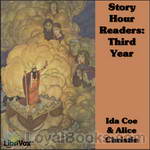 Story Hour Readers: Third Year
Story Hour Readers: Third Year
Short and sweet stories for children from the 19th century. The stories were compiled by two New York City teachers and were thought appropriate for third year children at that time. | |
By: Ida Dandridge Bennett (1860-1925) | |
|---|---|
 The Flower Garden: A Handbook of Practical Garden Lore
The Flower Garden: A Handbook of Practical Garden Lore
This book is a good reference on the perennial flower gardening and landscaping. It contains information on growing the plants from seed and explains how to grow and care for the traditional garden flowering plants, bulbs, trees, and shrubs. There are sections covering all aspects of ornamental gardens including water gardens and caring for house plants in the winter. The author has lots of unexpected but good advice in her chapter of Don’ts, for example: "Don’t supply with cut flowers, plants... | |
By: Imogen Clark | |
|---|---|
 Rhymed Receipts for Any Occasion
Rhymed Receipts for Any Occasion
In addition to being amusing, recipes written in a poetic form were easy to remember and used as learning tools for the young housekeeper. Many of the poems in this 1912 publication were originally published in Woman's Home Companion, Good Housekeeping Magazine, the Housewife, Table Talk, and the Boston Cooking School Magazine. | |
By: Izaak Walton (1593-1683) | |
|---|---|
 The Compleat Angler
The Compleat Angler
The Compleat Angler is a celebration of the art and spirit of fishing in prose and verse. Walton did not profess to be an expert with the fly, but in the use of the live worm, the grasshopper and the frog "Piscator" could speak as a master. There were originally only two interlocutors in the opening scene, "Piscator" and "Viator"; but in the second edition, as if in answer to an objection that "Piscator" had it too much in his own way in praise of angling, he introduced the falconer, "Auceps," changed "Viator" into "Venator" and made the new companions each dilate on the joys of his favourite sport. | |
By: J. C. Ryle (1816-1900) | |
|---|---|
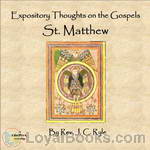 Expository Thoughts on the Gospels - St. Matthew
Expository Thoughts on the Gospels - St. Matthew
“Expository Thoughts” divides the Gospels into sections of about twelve verses each, from which J. C. Ryle selects two or three prominent points to dwell on and bring to the reader’s attention. In Ryle’s day, there were many detailed commentaries and expositions on scripture. In writing these “Expository Thoughts”, Ryle aimed to offer a resource to the laity for use in family prayers, as an aid to those who visit the sick and desire a proper book to read on such occasions, and for private devotions for those whose callings and engagements make it impossible for them to read large commentaries... | |
By: J. Morris Slemons (1876-1948) | |
|---|---|
 The Prospective Mother
The Prospective Mother
A Handbook for Women During Pregnancy. This book, written for women who have no special knowledge of medicine, aims to answer the questions which occur to them in the course of pregnancy. Directions for safeguarding their health have been given in detail, and emphasis has been placed upon such measures as may serve to prevent serious complications. (Introduction by J. Morris Slemons) | |
By: J.G. M'Pherson (1845-?) | |
|---|---|
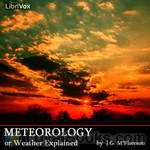 Meteorology; or Weather Explained
Meteorology; or Weather Explained
Weather Explained: Fog, clouds, rain, haze, thunder, cyclones, dew point and how to count dust motes are just a few of the 35 topics covered in short, easy to read and understand chapters in this book published in 1905. | |
By: Jacob A. Riis (1849-1914) | |
|---|---|
 Neighbors – Life Stories of the Other Half
Neighbors – Life Stories of the Other Half
These stories have come to me from many sources—some from my own experience, others from settlement workers, still others from the records of organized charity, that are never dry, as some think, but alive with vital human interest and with the faithful striving to help the brother so that it counts. They have this in common, that they are true. For good reasons, names and places are changed, but they all happened as told here. I could not have invented them had I tried; I should not have tried if I could... | |
By: Jacob Abbott (1803-1879) | |
|---|---|
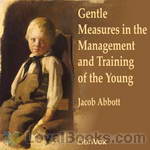 Gentle Measures in the Management and Training of the Young
Gentle Measures in the Management and Training of the Young
Subtitled, "The principles on which a firm parental authority may be established and maintained, without violence or anger, and the right development of the moral and mental capacities be promoted by methods in harmony with the structure and the characteristics of the juvenile mind." This book gives practical advice on how to raise children using "gentle measures" that do not damage the children's emotions or self esteem. Most of the information is as relevant and practical today as it was when published in 1871. | |
By: James Allen | |
|---|---|
 The Way of Peace
The Way of Peace
The Way of Peace is your guide to the power of meditation; self and truth; the acquirement of spiritual power; the realization of selfless love; entering into the infinite; saints, sages, and saviors; the law of service; and the realization of perfect peace. | |
By: James Champlin Fernald (1838-1918) | |
|---|---|
 English Synonyms and Antonyms
English Synonyms and Antonyms
English Synonyms and Antonyms is basically a vocabulary builder that students might use as they prepare for entrance or exit exams. Each entry gives a list of synonyms, followed by a paragraph that briefly explains or exemplifies the subtle distinctions between the listed words. The entries sometimes close with a few words on the prepositions that follow selected synonyms, but more often with a list of antonyms.By "synonyms" we usually understand words that coincide or nearly coincide in some part of their meaning, and may hence within certain limits be used interchangeably, while outside of those limits they may differ very greatly in meaning and use... | |
By: Jane D. Abbott (1881-1968) | |
|---|---|
 Highacres (Dramatic Reading)
Highacres (Dramatic Reading)
The story of a young mountain girl and her first year of city living and going to a high school. She knows nothing of town life, but she had dreams and longs to learn more and discover what the world is like outside of her mountain home. Go with her to the Westley's home, where she finds everyone kind, except the Wesley's oldest daughter, Isobel, who is proud and snubs her. With determination, and courage she enjoys her first year, and longs to continue at Highacres. | |
By: Jane Marcet (1769-1858) | |
|---|---|
 Mary's Grammar: Interspersed with Stories and Intended for the Use of Children
Mary's Grammar: Interspersed with Stories and Intended for the Use of Children
Mary's teacher has taxed her with the task of learning that most onerous of all parts of the English language: Grammar. Through stories and practical exercises, Mary's mother shows her that it's really not as hard as she thinks. Join us on this delightful journey as Mary learns her Grammar. - Summary by Jennifer Dallman | |
By: Janet D. Wheeler | |
|---|---|
 Billie Bradley at Three Towers Hall
Billie Bradley at Three Towers Hall
Three Towers Hall was a boarding school for girls For a short time after Billie arrived there all went well. But then the head of the school had to go on a long journey and she left the girls in charge of two teachers. sisters. who believed in severe discipline and in very. very plain food and little of it - and then there was a row! This is the second book in the "Billie Bradley" series, a mystery series for girls. | |
By: Jeanne Marie Bouvier de la Motte Guyon (1648-1717) | |
|---|---|
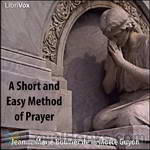 A Short and Easy Method of Prayer
A Short and Easy Method of Prayer
Originally published in 1685, Madame Guyon’s A Short and Easy Method of Prayer is considered a classic of Christian mysticism, influencing great writers and speakers such as John Wesley and Charles Spurgeon. In it, Madame Guyon carefully and briefly sets out her ‘unmethodical method’ by which any and all can commune with God at any time and under any circumstances. | |
By: John Casper Branner | |
|---|---|
 A Brief Grammar of the Portuguese Language
A Brief Grammar of the Portuguese Language
Dr. Branner was a recognized authority on the geology of South American republics, especially Brazil, having organized and headed the Stanford Expedition to Brazil in 1911, among others. In 1910 he published this "little book", as the author himself calls it, for the use of English-speaking students who needed a fast and practical way of learning Portuguese. Contrary to the belief of many back then, John C. Branner claims that Brazilian Portuguese isn't "badly spoken Portuguese", and, even though using examples from both Portuguese and Brazilian writers, seems to give more proeminence to Brazilian Portuguese. | |
By: John Charles Van Dyke | |
|---|---|
 A Text-Book of the History of Painting
A Text-Book of the History of Painting
A TEXT-BOOK OF THE HISTORY OF PAINTINGBY JOHN C. VAN DYKE, L.H.D.PREFACE.The object of this series of text-books is to provide concise teachable histories of art for class-room use in schools and colleges. The limited time given to the study of art in the average educational institution has not only dictated the condensed style of the volumes, but has limited their scope of matter to the general features of art history. Archaeological discussions on special subjects and aesthetic theories have been avoided... | |
By: John Clare (1793-1864) | |
|---|---|
 Schoolboys in Winter
Schoolboys in Winter
Librivox volunteers bring you 7 readings of Schoolboys in Winter, by John Clare. This was the weekly poem for the week of January 4, 2015. | |
By: John Owen (1616-1683) | |
|---|---|
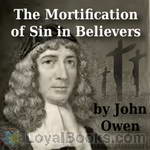 The Mortification of Sin in Believers
The Mortification of Sin in Believers
John Owen, in this Puritan classic, writes succinctly of the matters of the heart in dealing with sin in the life of the Christian. In a way that cuts right to the heart of the matter while leaving no room for excuses, Owen encourages the Christian to “Be killing sin or sin will be killing you.” | |
By: John S. Hart (1810-1877) | |
|---|---|
 In the School Room
In the School Room
In the first place, teaching is not simply telling. A class may be told a thing twenty times over, and yet not know it. Talking to a class is not necessarily teaching. I have known many teachers who were brimful of information, and were good talkers, and who discoursed to their classes with ready utterance a large part of the time allotted to instruction; yet an examination of their classes showed little advancement in knowledge. | |
By: John William Norie (1772-1843) | |
|---|---|
 Piloting Directions for the Gulf of Finland
Piloting Directions for the Gulf of Finland
Norie's series of piloting and sailing directions was something of a staple in the chart-room of 19th century British (and other) merchant vessels. The description of landmarks and ports, as well as the rules and regulations provide another viewpoint to an earlier age. Please note that these piloting directions are rather completely out of date. They are given here for purposes of historical interest only, and should not be used for navigation purposes. | |